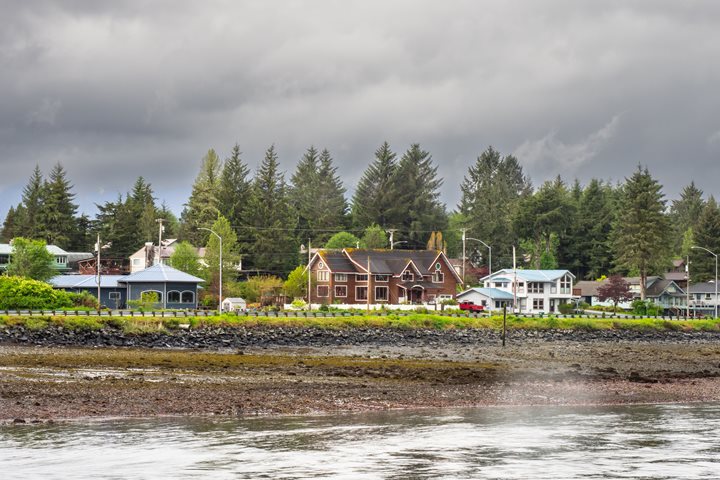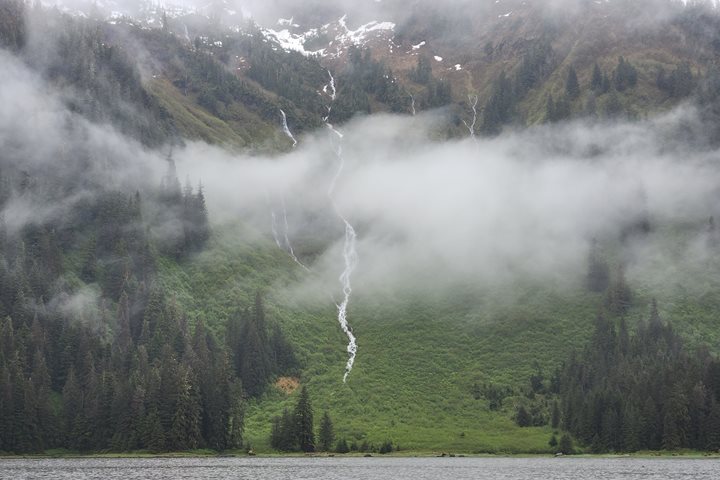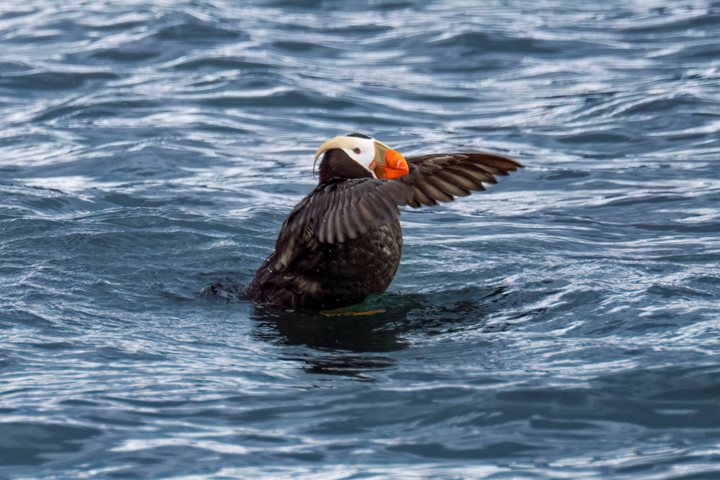Today many of the facets of Southeast Alaska unfolded in front of us throughout the day. From the time the National Geographic Sea Lion anchored in Pavlof Harbour right up until our evening recap started the day couldn’t have been better scripted. Shortly after the anchor was set this morning, the fabled denizens of the temperate rainforest ambled out on the shoreline for their morning grazing session in the tidal meadows. First a sow coastal brown bear and her two spring cubs were spotted off the starboard of the vessel, shortly thereafter a lone young brown bear strolled out on the shore off the port side of the ship. By the time we began our operations the lone young bear was joined by its mother. This pair of bears spent the entire morning foraging along the shoreline, allowing for wonderful observations gained by both of our rounds of kayakers in this spectacular bay. Pavlof harbor has at its head, a rushing cascade draining the lake basin above it where most of us were fortunate enough to explore during our morning activities. Taking in all the magnificent components of the interactions between temperate rainforest, tidal communities and the top terrestrial predator in North America made for a memorable morning.
Our intentions for the afternoon were to spend time at sea navigating south down Chatham Strait in search of marine wildlife to observe. Just before lunch photo instructor, David Spiegel gave an informative talk on smart phone photography. By midafternoon we had spotted a group of Killer Whales, the top predator in the world’s oceans. Taking time to watch these incredible animals is always a pleasure and this time was no different. Very close to the ship we observed and adult female (AF57 and her 18-month-old calf, as well as another adult female, off further in the distance was the rest of the group (AF5) likely searching out their preferred prey of pacific salmon. Shortly after expedition diver/naturalist, Emily Pickering, gave a presentation on “Fisheries of Southeast Alaska” a major component of life in Alaska. Later in the afternoon we had a scheduled pick up of a longtime affiliate and colleague of ours, Dr. Andy Szabo, Director of the Alaska Whale Foundation, to have him join us onboard to inform us of his organizations work here in Southeast Alaska. A delicious dinner followed by a presentation from another affiliate of ours, Planet Forward, which brings young students from all over the country to tell the story of significant places like Southeast Alaska.







